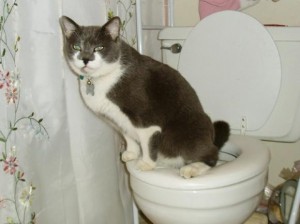Prevent Clogs and Damage: Don't Flush Cat Poop Down Your Toilet - Professional Insights
Prevent Clogs and Damage: Don't Flush Cat Poop Down Your Toilet - Professional Insights
Blog Article
Presented here in the next paragraph you will find additional professional news relating to Can You Flush Cat Poop Down The Toilet?.

Intro
As pet cat proprietors, it's essential to be mindful of how we take care of our feline friends' waste. While it might appear practical to flush pet cat poop down the commode, this method can have harmful repercussions for both the atmosphere and human health.
Alternatives to Flushing
Thankfully, there are safer and more liable means to throw away feline poop. Think about the adhering to choices:
1. Scoop and Dispose in Trash
The most common approach of throwing away cat poop is to scoop it into an eco-friendly bag and throw it in the trash. Make sure to make use of a specialized litter inside story and take care of the waste quickly.
2. Use Biodegradable Litter
Go with eco-friendly pet cat litter made from products such as corn or wheat. These clutters are environmentally friendly and can be safely gotten rid of in the garbage.
3. Bury in the Yard
If you have a backyard, take into consideration hiding pet cat waste in a marked area away from veggie yards and water sources. Be sure to dig deep sufficient to prevent contamination of groundwater.
4. Install a Pet Waste Disposal System
Buy an animal waste disposal system particularly created for cat waste. These systems utilize enzymes to break down the waste, minimizing odor and ecological impact.
Wellness Risks
In addition to ecological concerns, purging feline waste can also posture health and wellness dangers to human beings. Pet cat feces may include Toxoplasma gondii, a bloodsucker that can create toxoplasmosis-- a possibly severe disease, especially for expectant females and people with damaged body immune systems.
Ecological Impact
Purging pet cat poop presents hazardous pathogens and parasites right into the water supply, posing a significant risk to marine ecological communities. These impurities can negatively impact aquatic life and compromise water high quality.
Final thought
Accountable pet possession expands past providing food and sanctuary-- it also entails appropriate waste management. By refraining from purging cat poop down the commode and selecting alternative disposal methods, we can lessen our environmental footprint and protect human health and wellness.
Why Can’t I Flush Cat Poop?
It Spreads a Parasite
Cats are frequently infected with a parasite called toxoplasma gondii. The parasite causes an infection called toxoplasmosis. It is usually harmless to cats. The parasite only uses cat poop as a host for its eggs. Otherwise, the cat’s immune system usually keeps the infection at low enough levels to maintain its own health. But it does not stop the develop of eggs. These eggs are tiny and surprisingly tough. They may survive for a year before they begin to grow. But that’s the problem.
Our wastewater system is not designed to deal with toxoplasmosis eggs. Instead, most eggs will flush from your toilet into sewers and wastewater management plants. After the sewage is treated for many other harmful things in it, it is typically released into local rivers, lakes, or oceans. Here, the toxoplasmosis eggs can find new hosts, including starfish, crabs, otters, and many other wildlife. For many, this is a significant risk to their health. Toxoplasmosis can also end up infecting water sources that are important for agriculture, which means our deer, pigs, and sheep can get infected too.
Is There Risk to Humans?
There can be a risk to human life from flushing cat poop down the toilet. If you do so, the parasites from your cat’s poop can end up in shellfish, game animals, or livestock. If this meat is then served raw or undercooked, the people who eat it can get sick.
In fact, according to the CDC, 40 million people in the United States are infected with toxoplasma gondii. They get it from exposure to infected seafood, or from some kind of cat poop contamination, like drinking from a stream that is contaminated or touching anything that has come into contact with cat poop. That includes just cleaning a cat litter box.
Most people who get infected with these parasites will not develop any symptoms. However, for pregnant women or for those with compromised immune systems, the parasite can cause severe health problems.
How to Handle Cat Poop
The best way to handle cat poop is actually to clean the box more often. The eggs that the parasite sheds will not become active until one to five days after the cat poops. That means that if you clean daily, you’re much less likely to come into direct contact with infectious eggs.
That said, always dispose of cat poop in the garbage and not down the toilet. Wash your hands before and after you clean the litter box, and bring the bag of poop right outside to your garbage bins.
https://trenchlesssolutionsusa.com/why-cant-i-flush-cat-poop/

We were shown that write-up about Don’t flush cat feces down the toilet through an associate on another website. So long as you enjoyed our blog posting kindly don't forget to pass it around. Bless you for your time. Don't forget to come visit our website back soon.
Check Us Out Report this page